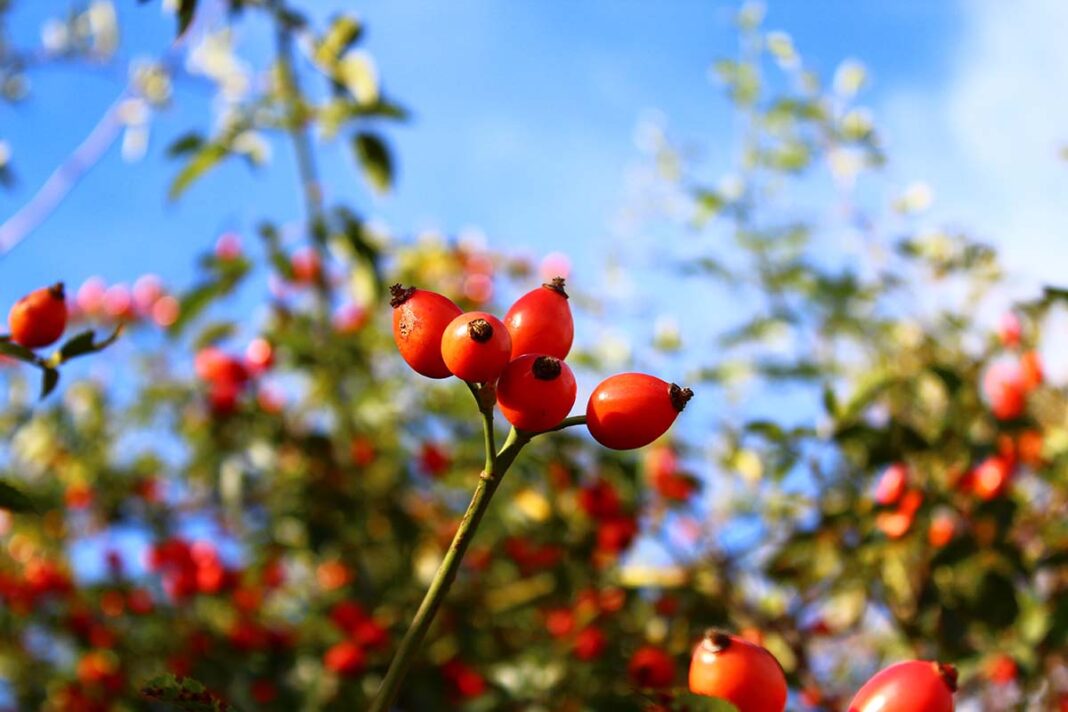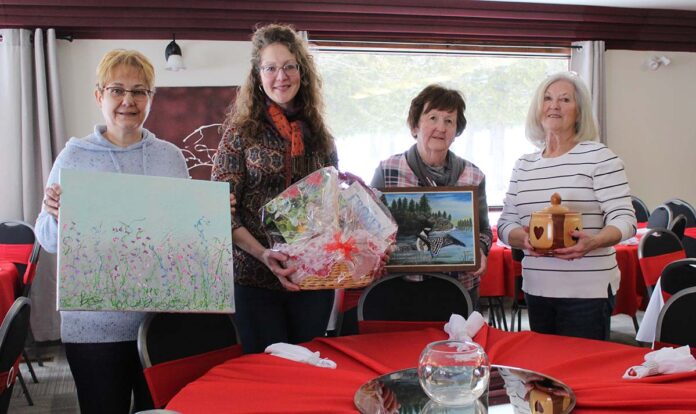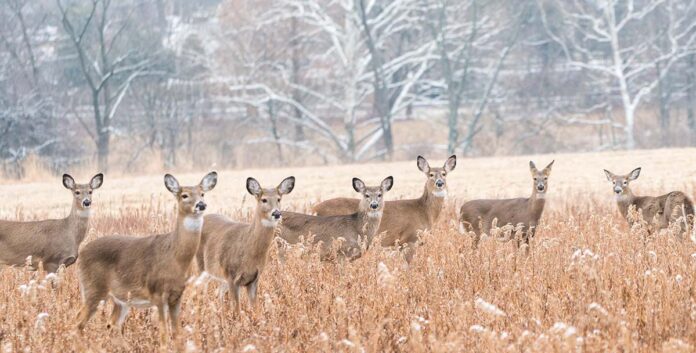by Joe D. Shorthouse
Public education is key to protecting functioning ecosystems and all the citizens of Manitoulin Island and its visitors should inform themselves of the biodiversity crisis and find ways to prevent the problem from worsening.
One impact of the COVID-19 pandemic is that many people are spending more time in their gardens than in the past. Family camping trips with quality time spent hiking and canoeing were more frequent than pre-pandemic days. People have discovered the impact of connecting with nature on their mental health and levels of stress. While doing so, they are gaining a new-found appreciation of biodiversity.
Several books have recently appeared arguing that contact with nature and its biodiversity is critical for our well-being. In the book ‘Sacred Nature’, published last year, religion historian Karen Armstrong explores the spiritual power of nature and calls for us to reclaim this power in our everyday lives.
Ms. Armstrong describes our need to rediscover nature’s potency and form a connection to something greater than ourselves. She extols the power of silence and solitude, and argues how greater contact with, and appreciation for, nature can help us in unexpected ways, one of which is an acceptance of the important role of all species in an ecosystem.
David Suzuki republished his book ‘The Sacred Balance’ last year where he invites the reader to see ourselves as part of nature, not separate. He combines science, philosophy, spirituality and Indigenous knowledge to offer suggestions for creating an ecologically sustainable future.
Parents and schoolteachers charged with teaching science should regularly discuss biodiversity, and the need to protect natural ecosystems. Every home with young people should have a few reference books on flowering plants, birds, mammals, trees and insects.
Having access to such books is also important for families. There was a time when everyone relied on knowledge of plants and animals passed orally from one generation to the next. For example, centuries ago, when First Nations people ate hips of hawthorns (miinens in Ojibwe and scientific name Crataegus chrysocarpa) and wild roses (ogin in Ojibwe and scientific name Rosa blanda) for their high Vitamin C content, they had no books to identify these plants or learn about their habitats in which they grew. Knowledge that eating the hips of wild roses and hawthorns prevented death from scurvy was passed on orally, not by books.
It would have been recognized in generations past, that rose flowers (oginii-waabigwan in Ojibwe) become hips, after pollination by bees, wasps, flies and beetles. They still are today, but with pollinators on decline, it is possible that shrubs on Manitoulin Island are threatened.
A sign of the times, most residents of Manitoulin Island would have trouble identifying the habitats of the three species of wild roses that once kept earlier generations alive. The growing disconnect between most residents and natural ecosystems means that few can identify, for example, 10 of the most common trees, shrubs, birds, flowering plants or insects.
Knowing the correct common names of plants and animals, is the first step in unlocking vast amounts of information on the biology of each species. All species of flora and fauna on Manitoulin Island have a scientific name which is key to finding detailed information.
Information on the biology of each species of plant and animal on Manitoulin Island has been in books for years and is now available on the internet through cell phones, tablets and computers.
Check out books by Firefly Press and Lone Pine Press for guides to birds, mammals, trees, insects, etc. It would be easy for readers to add the Ojibwe name for common plants and animals on the pages in these books.
It would be humbling if all residents of Manitoulin Island could learn the indigenous names for at least a few of the common flora and fauna, such as white cedar (giizhik) and sugar maple (aninaatig), and squirrels (ajidamoo) (from the Ojibwe People’s dictionary at the University of Minnesota).
One of the outcomes of the Montreal COP15 in December was the recognition that halting loss of biodiversity cannot be done without the contributions of Indigenous Peoples. Making up only five per cent of the world’s population, Indigenous Peoples steward a high percentage of the world’s remaining biodiversity.
First Nation, Inuit and Métis communities in Canada have stewarded their territories for millennia and there has been renewed commitment on Manitoulin Island, and elsewhere, to establishing conserved areas, ensuring protection for an array of species and safeguarding biodiversity and culture for the future.
About 90 percent of protected areas established in Canada over the past two decades have been the result of Indigenous partnerships or Indigenous leadership, according to the Indigenous Leadership Initiative. To help promote Indigenous conservation, the federal government on December 6, 2022 announced $800 million in new funding.
For example, the largest remaining stand of trees in the Deciduous Forest Biome of southern Ontario is today preserved in the 6th Nations Reserve near Brampton. This was done while peoples of European descent removed nearly all stands of deciduous trees in southern Ontario and converted the land to agroecosystems. We now realize that more stands should have been preserved.
What can be done to protect biodiversity on Manitoulin Island?
An important start for Manitoulin Island would be to undertake a baseline inventory of biodiversity. How many species of birds, flowers, trees, mushrooms, and insects are on Manitoulin Island? No one knows. How can we determine if species are disappearing if we do not have baseline information?
Ideally, young people in public schools and on reserves could help collect these data. Instructions on how to undertake biodiversity studies are readily available in literature that is easily accessible. Since an understanding of biodiversity has implications for the tourism industry, perhaps grants can be obtained from governments to hire the appropriate people to help undertake such surveys, determine the correct names, and curate examples for reference purposes.
All citizens of Manitoulin Island, and visitors, should have the opportunity to learn about biodiversity. As my wife and I discovered at the 2022 Great Lakes Island Alliance Lake Erie Summit in October, tiny South Bass Island with a population of 700, just north of the Ohio mainland, has a wildlife and natural history museum where mammals and birds on the Erie islands are on display.
We have no such museum on Manitoulin, but perhaps one could be developed in the old school house at Mindemoya. This would be an ideal location to house a biodiversity study where island students and visiting graduate students and university researchers could assemble biodiversity information.
Home owners can make their yards a centre of biodiversity that attract birds, small mammals such as chipmunks and squirrels, and butterflies. If one expects to grow tomatoes, peas, beans, cucumbers, etc. there must be pollinators. If you are attracting these animals to your garden then you have reached a successful level of biodiversity.
There are provincially protected areas on Manitoulin Island such as Misery Bay Park, with others in the planning stage where biodiversity is still intact. The 7,300 hectare Vidal Bay property recently purchased by the Nature Conservancy of Canada is a vital step that will protect biodiversity including black bears and grey wolves.
Sustainable farming practices should include the retention of at least a few strips of natural forests around agricultural fields where pollinators and birds can survive. If changes in climate result in Manitoulin becoming suitable in the future for establishing, for example, apple orchards, we must ensure that insect pollinators will be available.
Manitoulin could consider developing a botanic garden and arboretum where examples of all trees, shrubs and key flowers and traditional medicinal plants are displayed. Perhaps a botanic garden could be developed on land with good soil near Mindemoya and access to water from the nearby lake. Botanic gardens are wildly popular and serve as a major source of information for residents and visitors.
People who live on islands in the Great Lakes recognize that by being isolated, islands are sensitive to change. In many cases, islands contain unique habitats, such as alvars, with plants uncommon elsewhere in the world. They need protecting because no one knows if alvar plants contain chemicals of medicinal value. This has never been explored.
Perhaps Manitoulin could establish an advisory committee comprised of homeowners, farmers, ranchers, foresters, ecologists, the tourist industry, First Nations and municipal urban planners to oversee activities that impact biodiversity such that both the environment and economy are sustained and protected. This committee could review and identify areas where species and habitats have declined and suggest steps to restore them.
Such a committee could charge itself with planning a biodiversity study and developing public displays which illustrate the importance of biodiversity, such as those on Lake Erie islands that explain, for example, why pollinators must be protected.
Public education is the key to protecting functioning ecosystems and all the citizens of Manitoulin Island and its visitors should inform themselves of the biodiversity crisis and finds ways to prevent the problem from worsening.
*Joe Shorthouse is a retired professor of entomology and environmental biology and summer resident of Manitoulin Island. He is also on the Steering Committee of the Great Lakes Islands Alliance.





